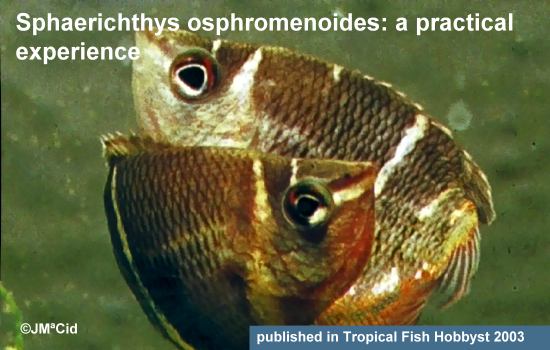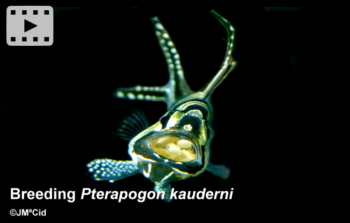Cyanobacteria, little-known but common in aquarium
Author: Jose Maria Cid RuizAbstract
In this article, its author, José María Cid, reviews the main characteristics of cyanobacteria, their feeding strategies, causes of its massive growth in aquariums, and finally, how to combat them. When it was discovered the distinction between prokaryotic cell (cell without nucleus) and eukaryotic (cell with nucleus), it was found that the living organisms currently called “cyanobacteria” were not true algae. Cyanobacteria are in fact, the only prokaryotic organisms capable to do oxygenic photosynthesis. Like the true algae, cyanobacteria have chlorophyll and a set of secondary pigments: phycocyanin, alophycocyanin (blue pigment) and phycoerythrin (red pigment). These last pigments, have the function of capturing energy from the light that is then absorbed by the chlorophyll-a. An organism that is able to survive during the day with a little bit of light and that still feeding at night with nitrogen from the atmosphere (nitrogen dissolved in the water), does not seem to need much additional help to settle in an aquatic environment as it is a freshwater or marine aquarium. They are in fact usually present although not detect them at a glance. The problem comes, when in the aquarium there is a significant imbalance by excess of energy: chemical (excess of organic carbon, nitrates, phosphates, silicates) and/or light (excess of luminous radiation). In general it’s observed that cyanobacteria have a behavior in the aquarium, which could be described as a “vital hysteresis” in relation to the source of energy (food) that made them appear, in the sense that a once well established, even if the “stimulus” disappears (the food source is eliminated almost completely), they will remain alive and even their colony may grow. Against this background somewhat disturbing a final conclusion seems we are able to extract: in terms of cyanobacteria, “better safe than sorry”.
Resumen
En este artículo, su autor, José María Cid, pasa revista a las principales características de las cianobacterias, sus estrategias de alimentación, causas que provocan sus crecimiento masivo en acuarios y finalmente como combatirlas. Cuando se descubrió la distinción entre célula procariota (célula sin núcleo) y eucariota (célula con núcleo), se constató que los organismos actualmente denominados “cianobacterias” no eran verdaderas algas. Las cianobacterias, son en realidad los únicos organismos procariontes capaces de realizar fotosíntesis oxigénica. Al igual que las algas verdaderas, poseen clorofila y también un conjunto de pigmentos secundarios: ficocianina, aloficocianina (pigmentos azules) y ficoeritrina (pigmento rojo). Estos pigmentos, tienen la función de captar energía lumínica que es posteriormente absorbida por la clorofila-a. Un organismo que para sobrevivir le basta de día algo de luz y que de noche dispone del nitrógeno que el aire contiene (en realidad del nitrógeno disuelto en el agua) para seguir alimentándose, no parece que necesite mucha ayuda adicional para establecerse en un medio acuático como es un acuario de agua dulce o marino. De hecho, casi siempre están presentes, aunque no las detectemos a simple vista. El problema sobreviene, cuando en el acuario se produce un desequilibrio significativo por exceso de energía: química (exceso de carbono orgánico, nitratos, fosfatos, silicatos, principalmente) y/o lumínica (exceso de radiación luminosa. En general se observa que las cianobacterias tienen un comportamiento en el acuario, que podríamos describir como una “histéresis vital” en relación a la fuente de energía (alimento) que las hizo aparecer, en el sentido de que una vez bien establecidas, aunque el “estimulo” desaparezca (se elimine casi por completo la fuente de alimento), ellas permanecerán vivas incluso su colonia podrá crecer. Ante este panorama algo inquietante una conclusión final parece poder extraerse: en materia de cianobacterias, “mejor prevenir que curar”.




